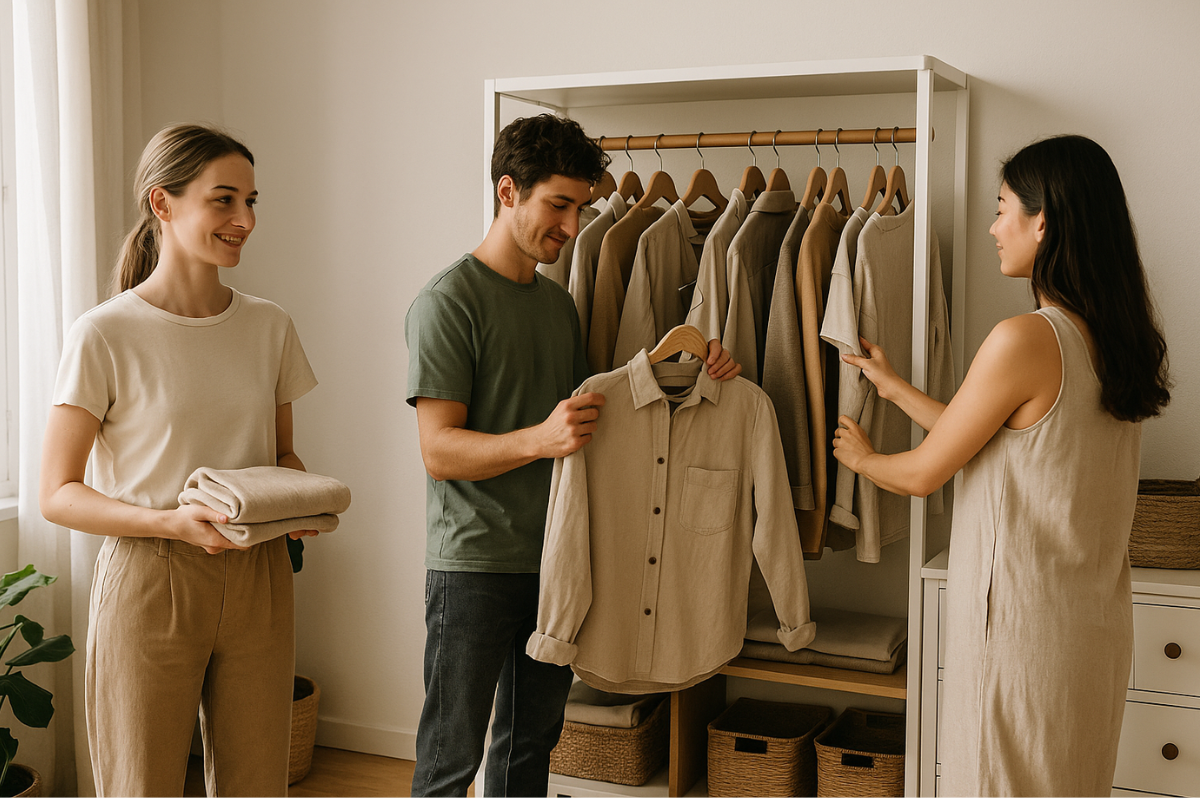Fashion is one of the most polluting industries in the world. From overproduction to textile waste and unethical labor practices, the true cost of fast fashion is hidden in plain sight. But there’s a growing movement toward slow, intentional fashion—and it starts with you.
Creating a minimalist, sustainable wardrobe isn’t about deprivation. It’s about making thoughtful choices that prioritize quality, versatility, and environmental impact. Here’s how to get started.
Why Choose a Minimalist Wardrobe?
A minimalist wardrobe is built around the concept of less but better. Instead of overflowing closets and endless options, you own fewer clothes that you actually love and wear often.
Key benefits:
- Reduces textile waste
- Saves time and energy when choosing outfits
- Encourages conscious consumption
- Supports ethical fashion practices
- Creates a clean, uncluttered space
It’s not about following a trend—it’s about aligning your style with your values.
Step 1: Declutter With Purpose
Before you build something new, start by editing what you already have.
How to declutter:
- Take everything out of your closet
- Try on each piece and ask: Do I wear this? Do I feel good in it?
- Create 3 piles: Keep, Donate/Sell, Repurpose
Let go of duplicates, items that no longer fit, or pieces that don’t match your lifestyle. Be honest but kind with yourself.
Step 2: Define Your Personal Style
Minimalism doesn’t mean boring. It means knowing what works for you and sticking to it.
Tips to identify your style:
- Think about your lifestyle (work, casual, events)
- Choose a core color palette (neutrals + 2-3 accent colors)
- Identify favorite silhouettes and fabrics
- Use Pinterest or mood boards for inspiration
Knowing your style prevents impulse buying and helps build a cohesive wardrobe.
Step 3: Build a Capsule Wardrobe
A capsule wardrobe consists of a small number of high-quality, versatile items that can be mixed and matched easily.
Capsule essentials may include:
- 2–3 pairs of pants (neutral colors)
- 2–3 tops per season
- A blazer or structured jacket
- 1–2 casual dresses or jumpsuits
- A well-fitted pair of jeans
- Outerwear appropriate for your climate
- Comfortable, neutral shoes
- Minimal accessories
Start small and expand only if needed.
Step 4: Choose Sustainable Fabrics
The materials your clothes are made from matter. Natural, biodegradable fibers are generally better for the planet.
Preferred fabrics:
- Organic cotton
- Linen
- Hemp
- Bamboo (ensure it’s responsibly processed)
- Tencel or lyocell
- Wool (ethically sourced)
Avoid synthetic fabrics like polyester, acrylic, and nylon—they shed microplastics and are derived from fossil fuels.
Step 5: Shop Ethically and Responsibly
What to look for:
- Transparent supply chains
- Fair labor certifications
- Eco-friendly packaging
- Brands that prioritize durability over trend
If sustainable brands are outside your budget, consider:
- Buying second-hand or vintage
- Using clothing rental services for special occasions
- Swapping clothes with friends or community groups
Step 6: Take Care of What You Own
Clothing lasts longer when properly cared for.
Sustainable maintenance tips:
- Wash clothes less often and in cold water
- Air dry when possible
- Repair minor damage (buttons, hems, seams)
- Use gentle detergents and eco-friendly laundry bags
Extending the life of your clothes is one of the most impactful habits you can build.
Step 7: Embrace Outfit Repeating
Forget the pressure of always wearing something new. Repeating outfits shows confidence and creativity—not laziness.
Use accessories, layering, and mixing pieces to create variety with fewer items.
Ideas:
- One blazer worn three ways (office, casual, evening)
- A white shirt styled with jeans, skirts, or under dresses
- Neutral trousers dressed up or down
Document your outfits if it helps you visualize combinations.
Step 8: Let Go of Guilt and Go at Your Own Pace
Transitioning to a minimalist, sustainable wardrobe is a journey—not an overnight shift. Don’t feel guilty for owning fast fashion or needing time to change. Use what you already have, and make more intentional choices moving forward.
Progress is better than perfection.
Dress With Intention
Minimalist fashion doesn’t mean sacrificing style—it means elevating it with meaning. When you dress with intention, every item has a purpose. You free yourself from trends, reduce your impact on the planet, and simplify your daily routine.
A sustainable wardrobe is about loving what you wear and knowing it aligns with who you are—and the world you want to live in.
